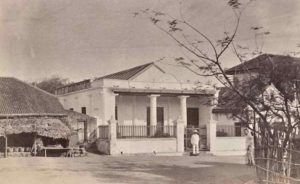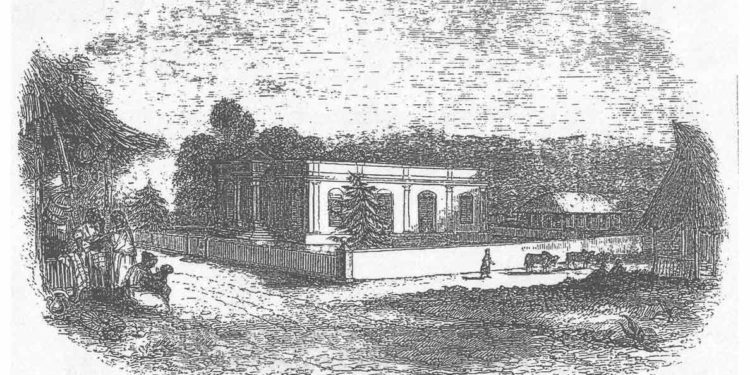The first Protestant missionaries came to Visakhapatnam in 1805. They were from the London Missionary Society (LMS). This was the first protestant missionary society that had come to the Telugu-speaking areas of the Old Madras Presidency in 1805. After their arrival, they focussed their attention mainly on opening schools, charity homes and translating the Bible into Telugu. These missionaries started Sunday worship services in English as well as in Telugu. But these Sunday worship services were conducted in the school rooms, or at Missionaries’ residences, or at the residences of some of the members of the congregation. Surprisingly, for about 30 years, they did not consider constructing a church building in Visakhapatnam.
In 1835, a missionary by the name of Reverend James William Gordon from the London Missionary Society arrived in Visakhapatnam. On his arrival, he noticed that there was no chapel in the town and that the English and Telugu congregations were conducting their worship services in school rooms. Reverend Gordon decided to construct a chapel and called for a meeting of the Congregation members and others. In the meeting, it was decided that a suitable place would be found to raise a sufficiently large church building. Members then came forward to collect Rs. 500. After a few months, another missionary, Reverend Edward Porter joined at Visakhapatnam and both reverends raised sufficient subscriptions from local, as well as distant parts of India for the church building.
They ultimately chose a place near Old Town Gate where the Mission was running a small school for native children. They purchased the site and with the help of a military engineer, they drew plans for construction. Foundations were dug in November 1835. A committee was formed to supervise the construction of the building. On 25 September, 1836, the chapel was dedicated. The English service was conducted in the morning and the Telugu service was conducted in the afternoon on that day. This was the first church building in Visakhapatnam, known as “Mission Chapel”, constructed by the London Missionary Society.
Both the English and Telugu congregations went on conducting their worship services in the same Mission Chapel building for some years. Later, the Telugu congregation constructed a separate chapel for themselves on the main road which was known as “Telugu Chapel”. After some time, the English congregation started congregating for their services at a small building called “Gospel House” at Thompson Street in Soldierpet. Their reasoning was that the new Mission Chapel building is a little away from their dwellings whereas the “Gospel House” is situated within their place of habitation. So, for some years, the Mission Chapel building was used for purposes other than worship services.

The London Missionary Society, after more than 100 years of service, decided to close their work at Visakhapatnam and shift their base to the Rayalaseema area in 1911. Their properties in Visakhapatnam were all taken over by the Canadian Baptist Mission (CBM). Thereby, all the LMS properties, which included the mission schools, missionary bungalows in present-day CBM Compound, Gospel House etc., went into the hands of CBM.
In consequence of this change, the congregation worshipping in Gospel House became Union Chapel. The old Mission Chapel building, which had ceased to be a place of worship for some years, was repaired and rededicated as “Andhra Baptist Church” in 1925. For this, a liberal donation was made by one Mrs. Birra Seethayamma, a new convert from the local Zamindari family. With little modifications, the first church building in Visakhapatnam continues as Andhra Baptist Church under CBM until the present day.
The Telugu Chapel on the main road, constructed by LMS, remained as an independent church, without getting transferred to CBM in 1911, along with all other properties. This Telugu church was later named as “London Mission Memorial Church” and is now under the Church of South India.
The above-mentioned facts and images have been provided by Vijjeswarapu Edward Paul, a city-based History Researcher. A retired Shipping Manager by profession, the septuagenarian, belying his age, has been collecting data on Vizag from British Library, London, Tamil Nadu Govt. Archives, Christian Theological college Archives at Bangalore and Hyderabad, and other public libraries.










Discussion about this post